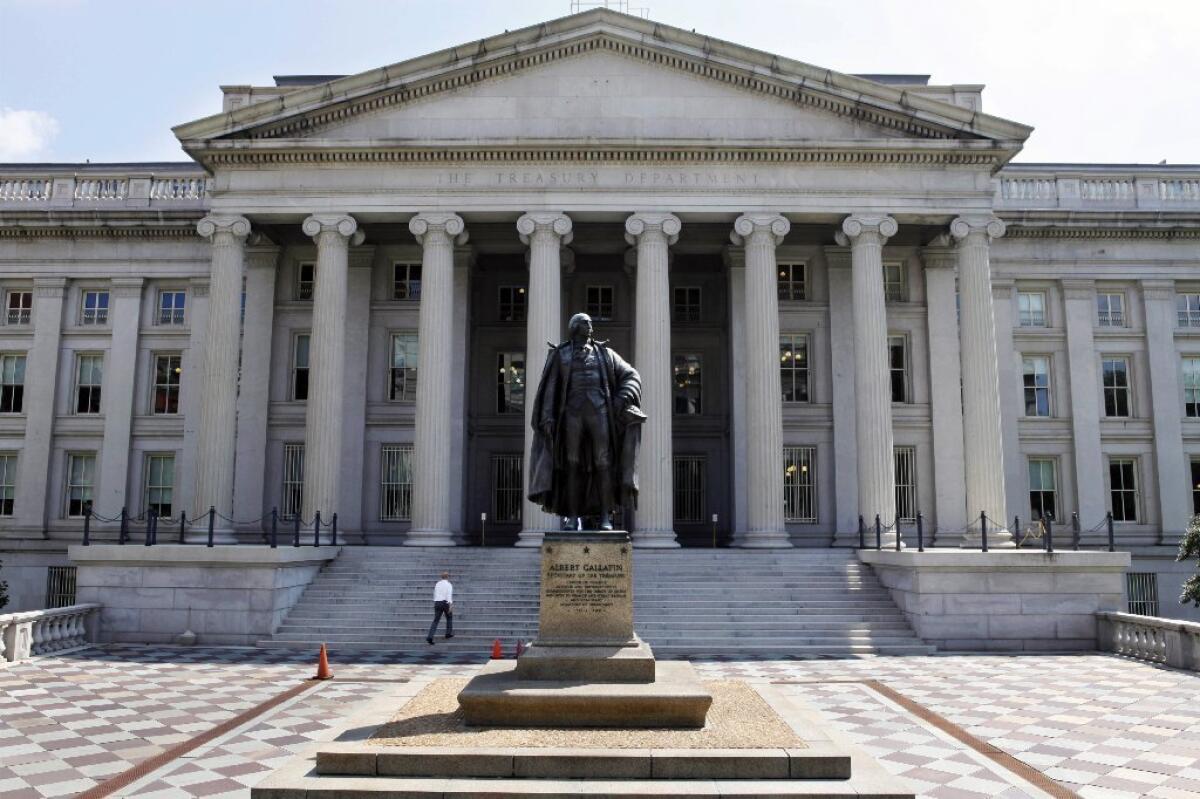U.S. will hit debt limit by year’s end; Treasury can delay impact

WASHINGTON -- The U.S. is expected to hit its debt limit again near the end of the year, but the impact can be delayed until early 2013, a Treasury Department official said Wednesday.
Treasury officials can take “extraordinary measures” to juggle the nation’s finances to give Congress and the White House more time to work on an increase to the $16.4-trillion debt limit.
“We continue to expect that these extraordinary measures would provide sufficient ‘headroom’ under the debt limit to allow the government to continue to meet its obligations until early in 2013,” Treasury said.
Lawmakers and President Obama will try to deal with the debt limit after next week’s elections, along with the contentious “fiscal cliff” -- large tax increases and government spending cuts set to begin in January.
The debt limit has become a focus of conservatives, who point to it as evidence of the nation’s spiraling budget deficits.
A bitter battle over raising the debt limit last year ended with a last-minute deal to boost it and avoid a potential U.S. default on its obligations.
The brinkmanship caused Standard & Poor’s to downgrade the U.S. credit rating for the first time , to AA+ from the highest level of AAA.
Part of the debt-ceiling deal involved automatic spending cuts of $1.2 trillion over the next decade -- half from defense, half from domestic programs -- if Congress and the White House could not agree on a broader deficit reduction plan.
Those cuts kick in starting Jan. 1. The George W. Bush-era tax cuts also expire at the end of December, so tax rates would rise at the start of 2013 if they are not extended. Economists warn the combination of tax hikes and spending cuts could trigger another recession.
In the 2011 debt limit battle, Treasury was able to use extraordinary measures to delay the impact for about 12 weeks. Those steps included various accounting tricks, such as tapping two federal employee pension funds for loans.
[For the record, 8:58 a.m. Oct. 31: An earlier version of this post said the debt limit was $14.69 trillion. It is actually $16.4 trillion.]
ALSO:
S&P; downgrades U.S. credit rating
With NYSE opening bell, Wall Street reopens after Sandy
U.S. hits debt limit and takes actions to postpone a default
Follow Jim Puzzanghera on Twitter and Google+.
More to Read
Inside the business of entertainment
The Wide Shot brings you news, analysis and insights on everything from streaming wars to production — and what it all means for the future.
You may occasionally receive promotional content from the Los Angeles Times.











